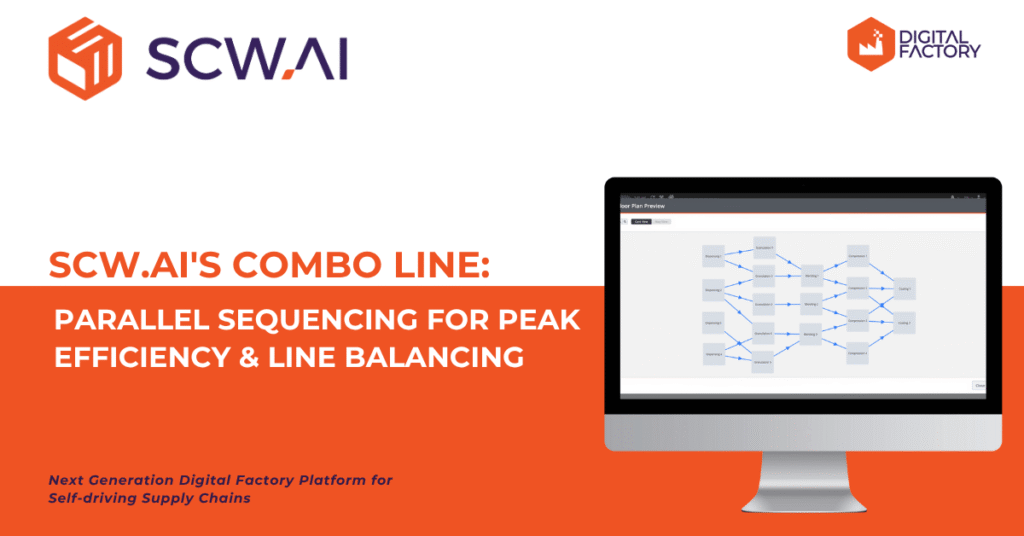The digital transformation of shop floors is rapidly evolving from a competitive advantage to a fundamental necessity for survival in modern manufacturing. The gap between lighthouses and traditionally operated factories continues to expand, underscoring the critical role of technology in achieving operational excellence. Industry analysis, such as insights from Bain & Company, highlights that enhanced factory visibility and intelligent automation can significantly amplify the impact of conventional lean initiatives, effectively doubling their potential.
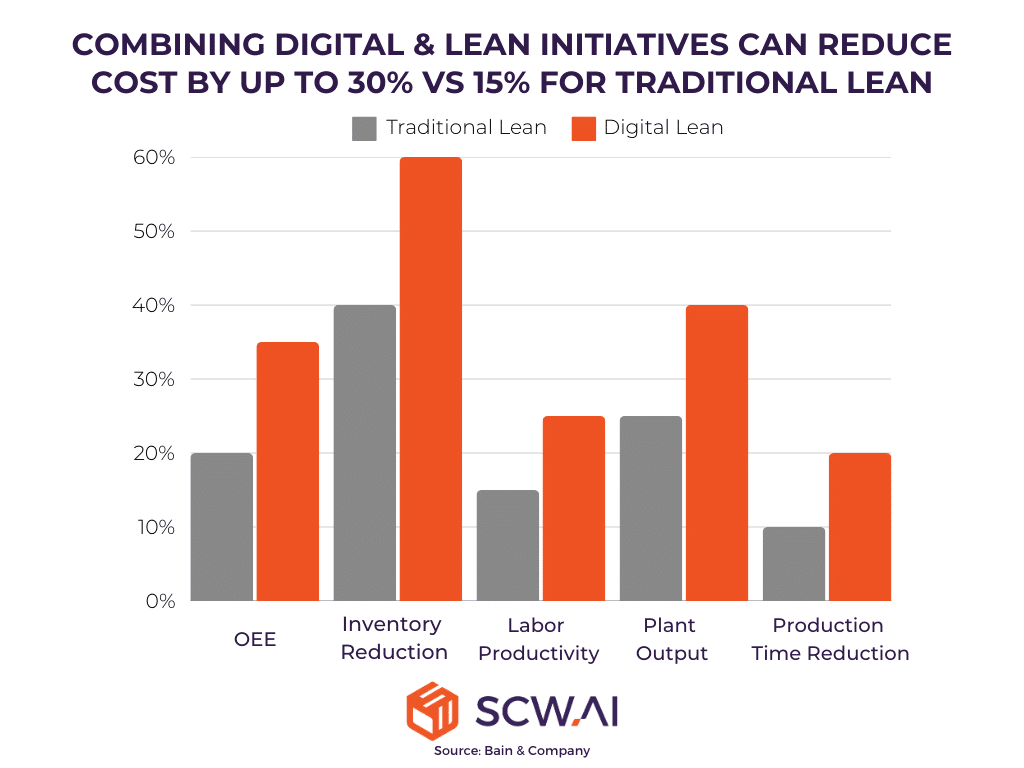
Beyond visibility and decision intelligence, cutting edge technology vendors are offering specialized solutions designed to improve the execution of data-driven insights. Among these innovative tools are digital kamishibai boards, also referred to as electronic t-cards. This article will delineate the tangible advantages that manufacturers can realize by transitioning from cumbersome paper-based traditional kamishibai boards to their more efficient digital counterparts. To provide a comprehensive understanding, we will first explore the kamishibai meaning and its established utilization as a core lean management strategy. Subsequently, we will focus on contemporary digital alternatives, examining their broad spectrum of application potential across the shop floor and their inherent superior capabilities.
A Short Story of Kamishibai Board: From Paper to Digital
The kamishibai board has its roots in medieval Japan, where kamishibai—literally meaning “paper drama”—was a form of street theater that used illustrated boards to tell stories to largely illiterate audiences. While originally designed for moral storytelling, the concept eventually found its way into the manufacturing world, inspiring one of the core visual tools of the Toyota Production System.
In a lean manufacturing context, the kamishibai board is a visual control system that uses color-coded t-cards to assign, track, and verify daily or recurring tasks. It represents a key element of kamishibai lean—a method rooted in visibility, discipline, and accountability.
Traditional Kamishibai Boards: The Foundation
Conventional kamishibai boards are physical whiteboards, usually located close to production areas and lines. These boards feature double-sided cards—commonly red and green—slotted into sections based on days of the week or task categories. Managers insert the cards to communicate required tasks, while team members flip them to indicate completion.
- Green side = Task completed
- Red side = Task pending
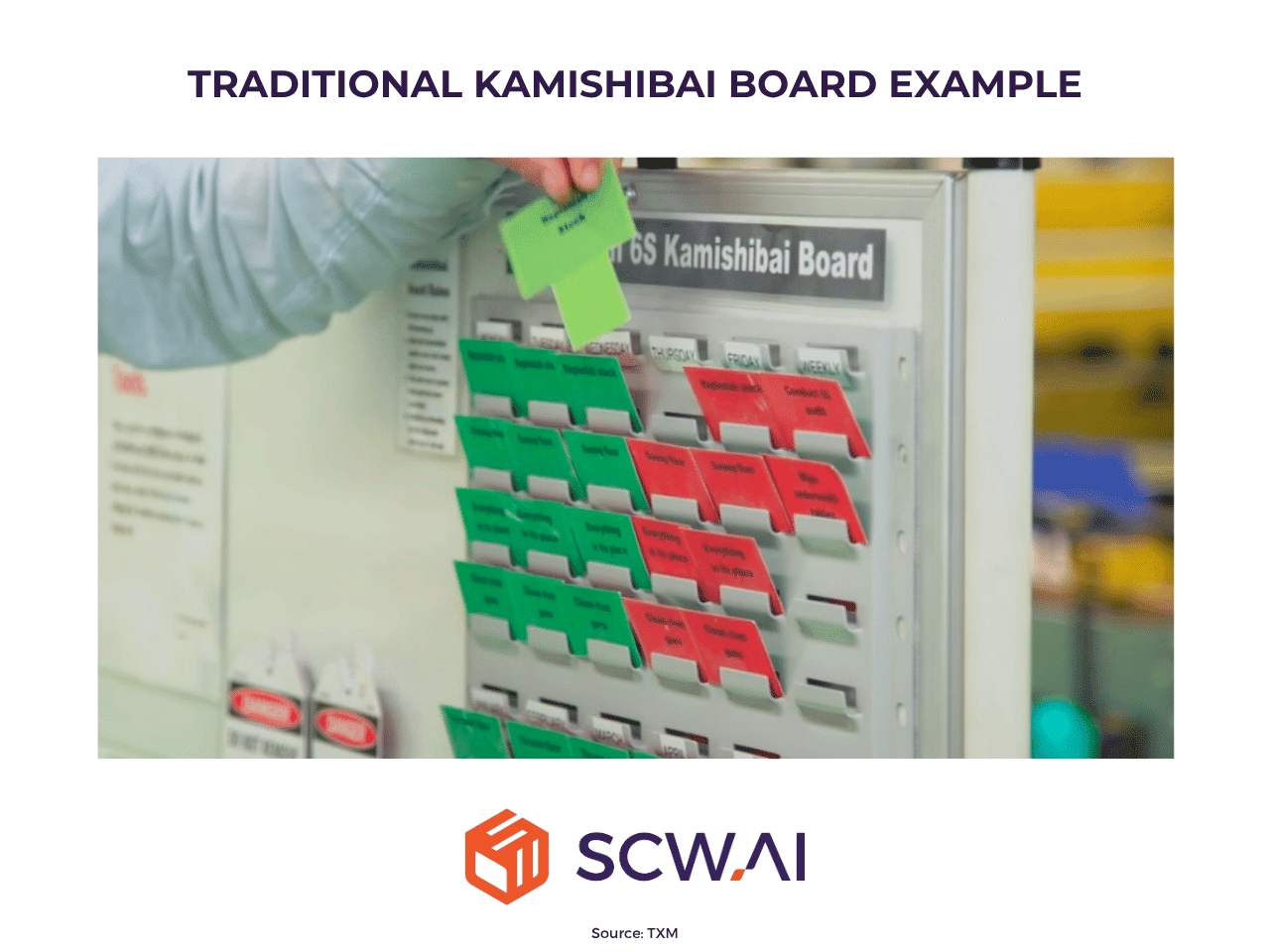
This straightforward visual cue allows supervisors to assess status at a glance while reminding frontline workers of their responsibilities.
However, traditional kamishibai boards come with operational drawbacks:
- Limited context: Paper-based t-cards cannot contain SOPs, checklists, or multimedia guidance. Workers often need to reference separate documents, wasting time and increasing the risk of errors.
- No control mechanism: There is no built-in safeguard to prevent cards from being flipped prematurely.
- Manual upkeep: The physical handling of cards introduces inefficiencies and potential inaccuracies.
Recognizing these limitations, modern solution providers like SCW.AI have developed digital alternatives to streamline and reinforce the integrity of kamishibai-based task management.
Digital Kamishibai Boards with Electronic T-Cards
Digital kamishibai boards transform the manual system into a centralized digital interface. Tasks are displayed in a calendar view—daily, weekly, or monthly—and represented as electronic t-cards. These cards retain the familiar color-coding scheme:
- Green: Completed
- Red: Not started
- Blue: In progress
Unlike their paper predecessors, electronic t-cards are interactive, traceable, and dynamically updated in real time, offering a live window into shop floor operations.
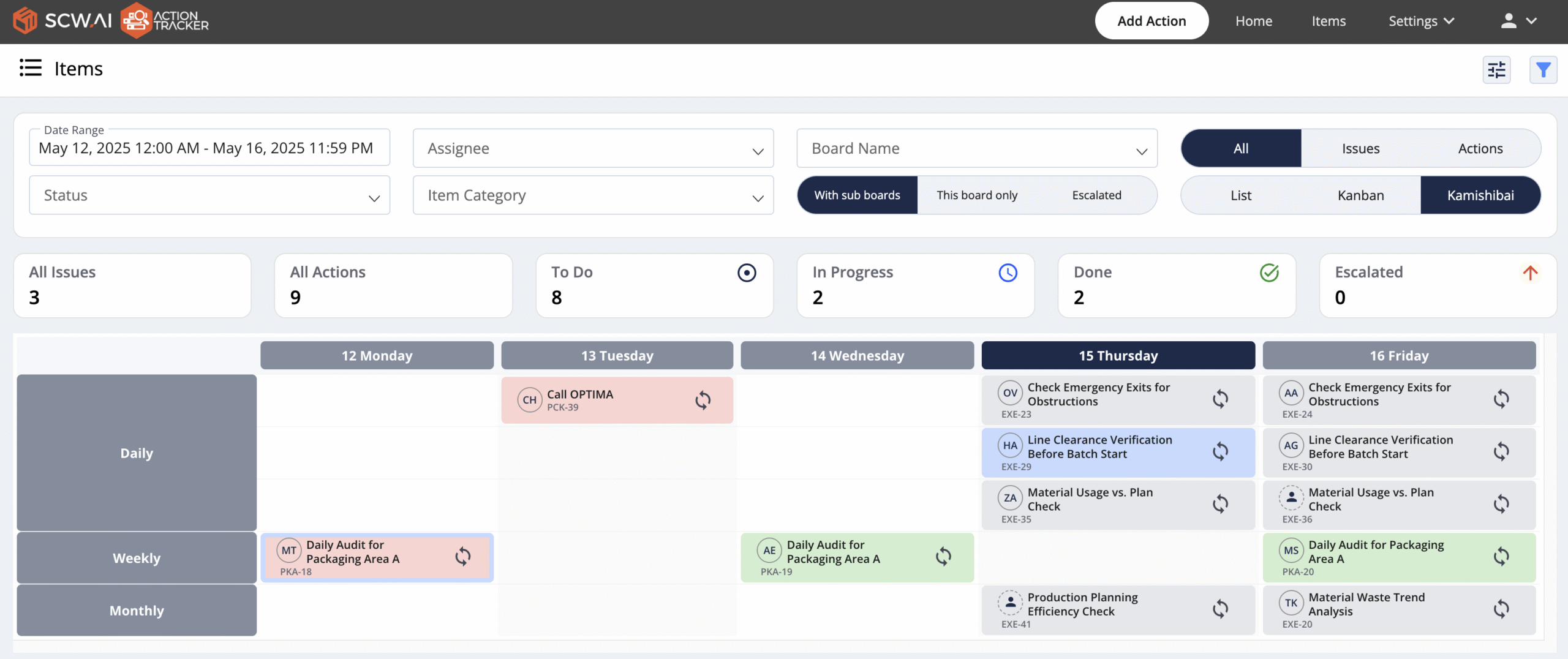
Key advantages of digital kamishibai boards include:
- Targeted task assignment: Managers can assign tasks to specific individuals or teams, so each operator sees only what’s relevant.
- Integrated digital SOPs: Each t-card can link to step-by-step procedures, visual instructions, videos, or checklists—making task execution clearer and faster.
- Real-time notifications: Employees receive alerts when tasks are assigned or deadlines are near, helping prevent missed actions.
- Audit-ready tracking: Every task can be logged with who completed it, when, and under what conditions—supporting quality control and compliance.
- Recurring task automation: Daily, weekly, or monthly tasks can be set to repeat automatically. Once configured, the system ensures continuity with minimal manual input.
Benefits of the Digital Kamishibai Board: Why Go Beyond Paper?
Below, we examine the core benefits that digital kamishibai lean systems bring to the modern manufacturing floor—referencing examples and potential screenshots from SCW.AI’s platform to illustrate how these tools work in practice.
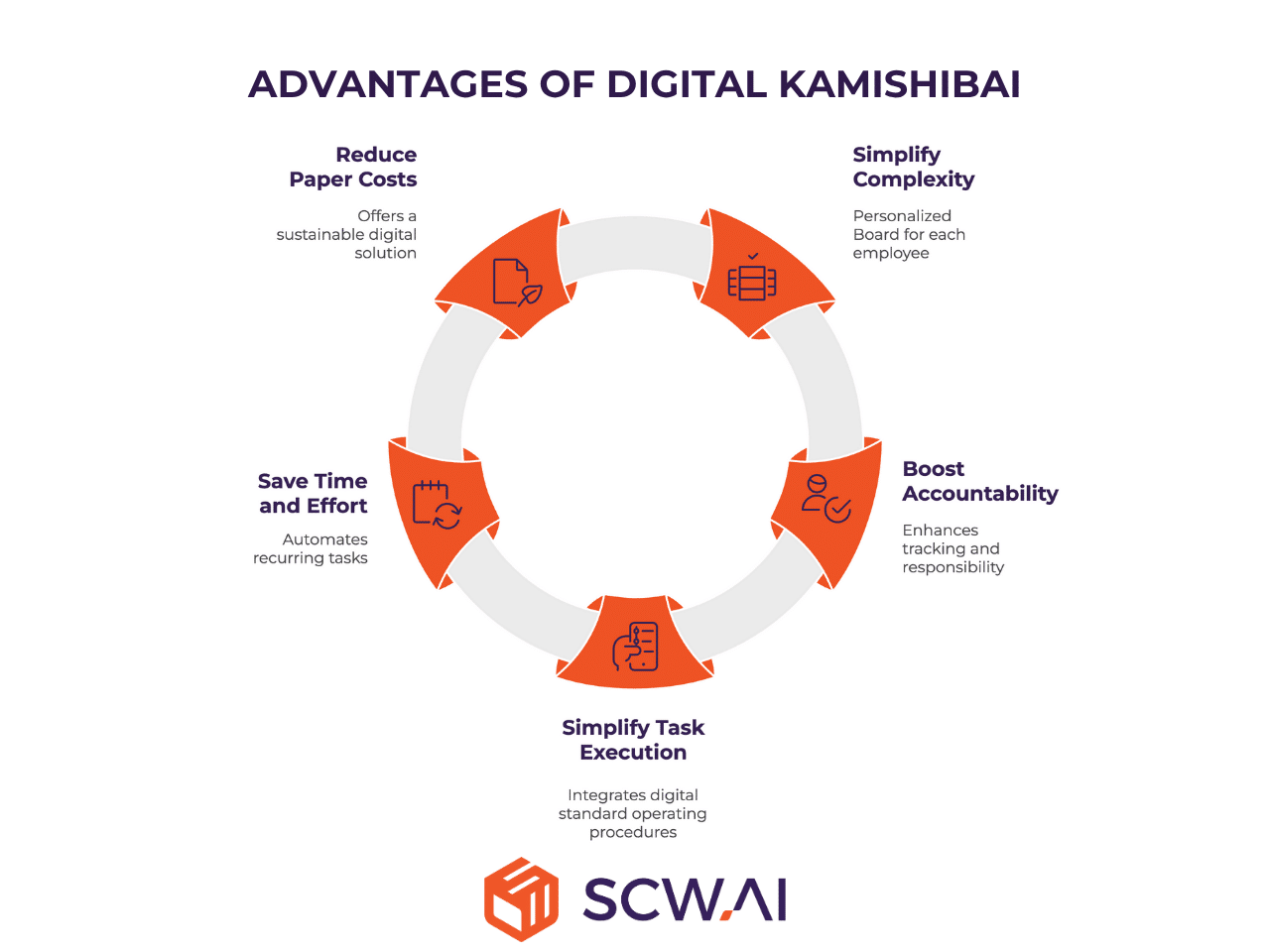
Simplify Complexity with Digital Kamishibai
In a traditional paper-based kamishibai board environment, clearly delineating task assignments to specific operators can be challenging. If task selection is left to the discretion of individual operators, it can lead to workforce underutilization or a situation where some team members may rely on the efforts of others to complete shop floor responsibilities. On the other hand, manually preparing kamishibai boards with assigned tasks to each person is time-consuming and error-prone.
Modern digital solutions address these complexities effectively. Executives can directly assign tasks to specific operators or teams within the digital interface. Prior to assignment, executives can evaluate operator skill matrices, enabling optimized workforce utilization. Once tasks are assigned, individual workers only view the responsibilities allocated to them, enhancing clarity and minimizing the potential for free-riding.

Boost Accountability Through Digital Tracking
A significant limitation of paper-based kamishibai boards is the potential for misrepresentation of task completion. Operators could conceivably flip a t-card to the green “completed” side even if the task has not been executed to the required standard. Digital kamishibai boards offer mechanisms to enhance accountability. Task completion can be configured to require supervisor approval before the status is officially changed.
Furthermore, comprehensive digital logs within the system provide a detailed audit trail of task progression, including when a task transitions to “in progress,” its final completion time, the personnel responsible for its execution, and the specific production line or area where the work was performed. This granular data significantly improves accountability and transparency across the shop floor.
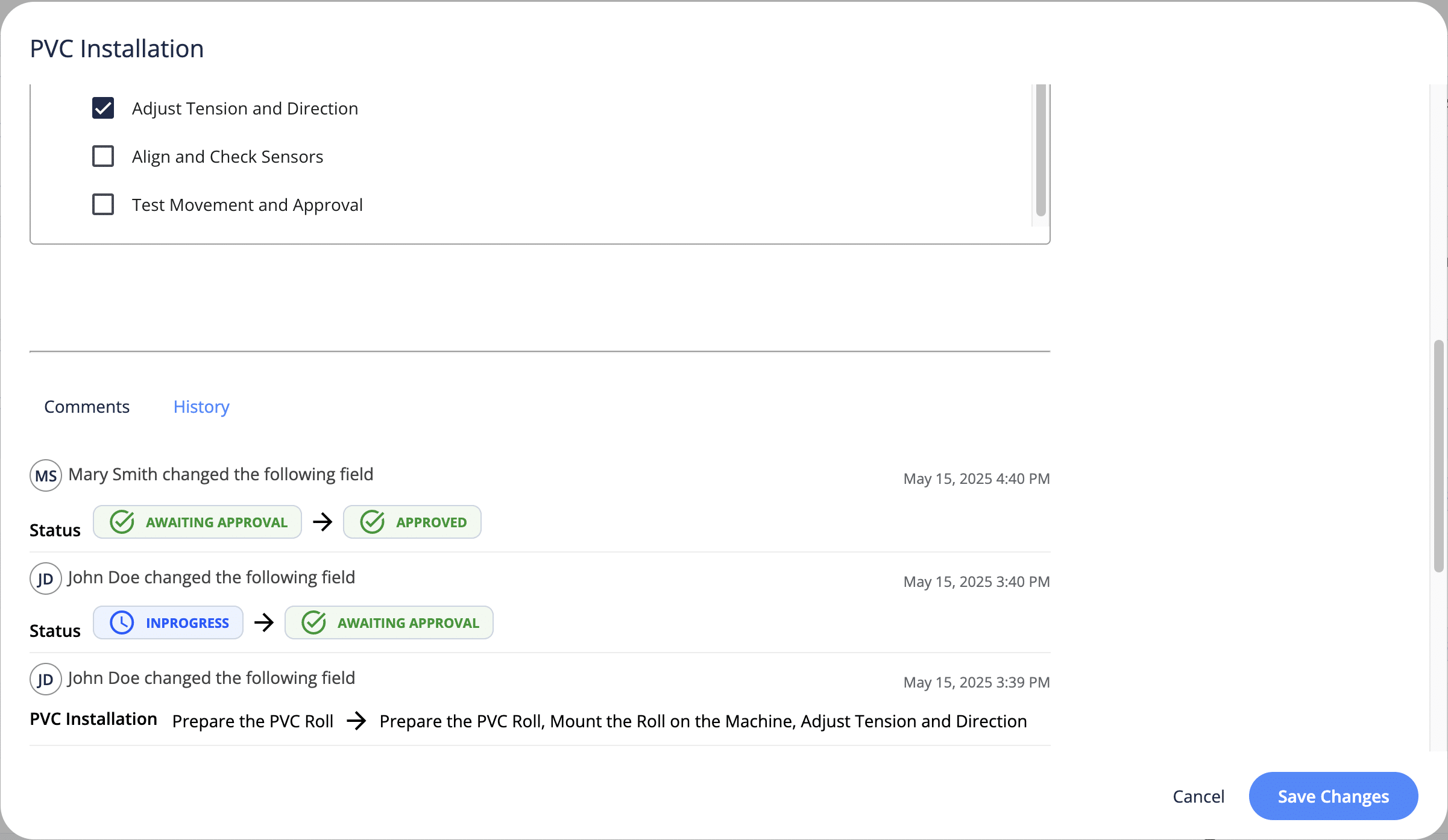
Simplify Task Execution with Integrated Digital SOPs
Traditional SOPs are often stored in separate binders or systems—inefficient and error-prone. Digital kamishibai boards centralize everything.
Each electronic t-card can link to:
- Written instructions (PDFs, Word documents)
- Step-by-step checklists
- Visual references (images, diagrams)
- Instructional videos
Operators no longer waste time searching for task guidance. They access everything at the point of execution—ensuring compliance, improving accuracy, and reducing training time. According to Boston Consulting Group, digitized SOPs alone can rival the ROI of advanced manufacturing AI applications like predictive maintenance when it comes to improving production quality.

Save Time and Effort: Digital T-Card Automation for Recurring Tasks
The creation of new electronic t-cards in a digital environment offers significant time savings. Manufacturers can leverage existing electronic cards as templates, allowing for simple duplication and modification for similar tasks. Moreover, as previously mentioned, for recurring tasks such as daily maintenance checks, users can simply define the recurrence frequency (e.g., daily, bi-daily weekly) and the system will automatically generate the tasks and assign them to the designated personnel until a change is implemented. This automation drastically reduces the manual effort associated with managing repetitive tasks.

Reduce Paper Costs with a Sustainable Digital Solution
The environmental impact of paper use in manufacturing is significant—linked to deforestation, water waste, and carbon emissions. Transitioning to a paperless manufacturing solution like a digital kamishibai board supports broader ESG goals.
- No more printing or storing paper t-cards
- Reduced need for physical SOP binders or task logs
- Tangible reduction in operational waste
By adopting digital t-card systems, manufacturers cut costs and contribute to long-term sustainability goals—an increasingly critical factor in supplier selection and regulatory compliance.
Top 4 Ways a Digital Kamishibai Board Enhances Lean Manufacturing
This section will illustrate the tangible business value that digital kamishibai boards bring to manufacturing shop floors through the following use cases.
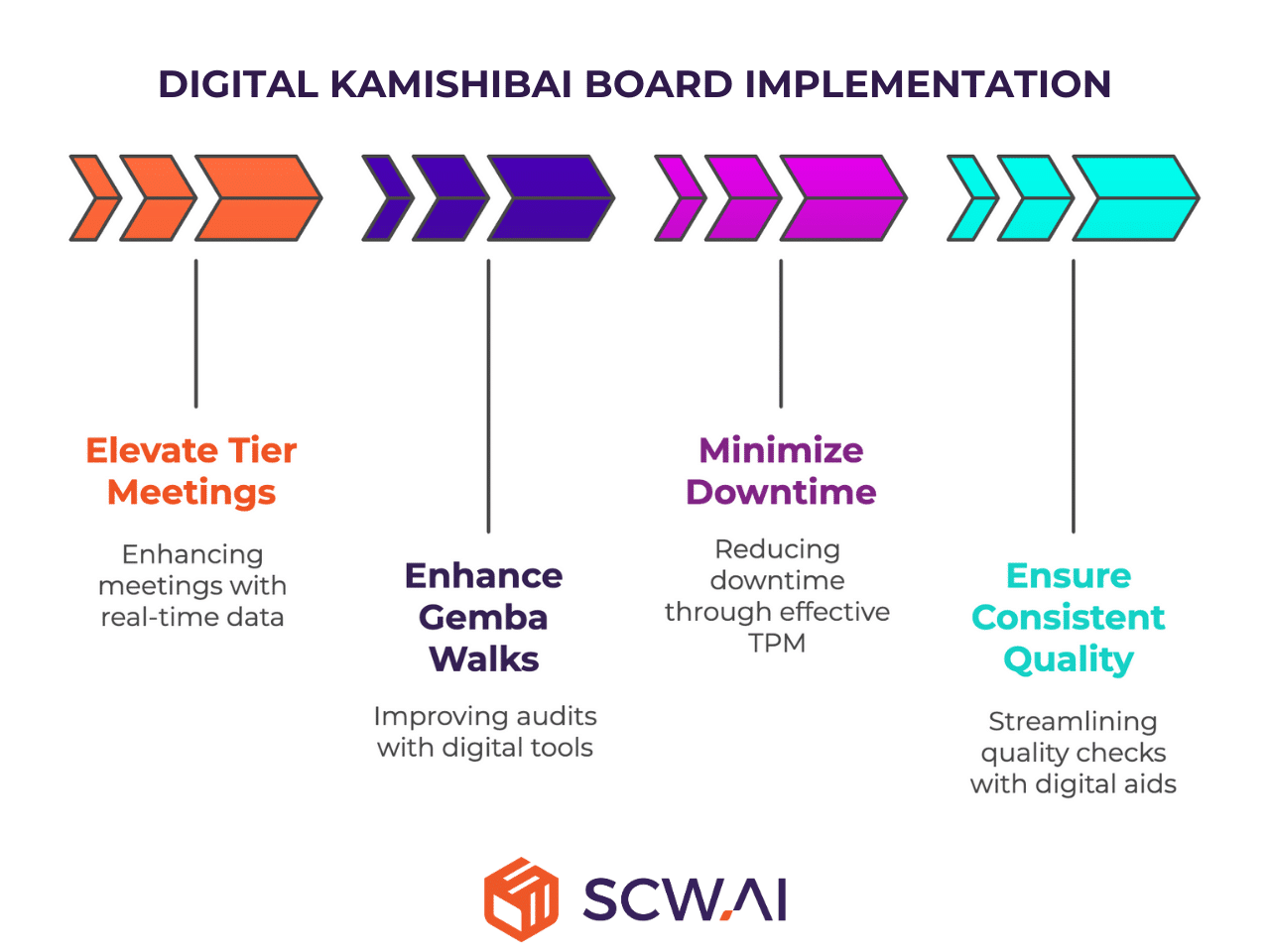
1. Elevate Tier Meetings with Real-Time Digital Visibility
Daily tier meetings—or huddles—are essential for aligning teams, surfacing issues, and prioritizing action. But when these meetings rely on outdated, paper-based tools like traditional kamishibai boards or SQCDP whiteboards, outcomes can suffer:
- Recurring issues are discussed but not resolved.
- Task ownership remains unclear.
- Follow-up is inconsistent.
SCW.AI’s Digital Kamishibai Board and Action Tracker transform these meetings into high-impact decision hubs. For example; during a huddle, a digital SQCDP board reveals persistent delivery delays.

Simultaneously, decision makers use the digital kamishibai board to:
- Assign root cause analysis to engineers (e.g., review OEE, takt time, FPY).
- Task maintenance to assess unplanned downtime.
- Ask planners to adjust production schedules to improve OTIF.
Follow-up meetings benefit from full transparency. Managers can see who is accountable, what is in progress, and what has been resolved—without wasting time chasing updates. The integration of digital visibility and targeted action drives continuous improvement and execution discipline.
2. Enhance Gemba Walks and Internal Audits
Gemba walks, the practice of going to the actual place where work is done, and internal audits are critical for understanding the real-time status of operations, identifying areas for improvement, and ensuring adherence to standards.
Digital kamishibai boards significantly enhance the effectiveness of both gemba walks and internal audits. Using a mobile device or tablet, personnel conducting these activities can directly interact with the digital board. They can instantly view the status of assigned tasks, check completion evidence (e.g., photos, notes attached to the electronic t-card), and identify any outstanding issues or deviations from standards by comparing the job instructions in digital SOPs.

During a gemba walk, if a problem is identified, a new task can be created and assigned immediately through the digital kamishibai board to the responsible individual or team, along with a description of the issue and any relevant observations. Similarly, during an internal audit, any non-conformities can be documented as tasks on the digital board, assigned for corrective action with deadlines, and tracked for completion. The ability to attach photos, videos, notes directly to the electronic t-cards provides richer context and facilitates clearer communication of findings.
3. Minimize Downtime: Leveraging Digital Kamishibai for Effective TPM
Total Productive Maintenance (TPM) depends on consistency. Missed or poorly executed maintenance tasks lead to greater cost and less output.
Digital kamishibai boards make TPM execution reliable and transparent:
- Recurring preventive maintenance tasks are scheduled with defined frequency (daily, weekly, monthly).
- Assignments are made to individuals or teams with clarity.
- Each electronic t-card includes a digital checklist with detailed instructions.

Maintenance personnel update tasks live, attach before/after photos, and escalate issues within the same system—creating a full maintenance log. Managers get visibility into status and compliance, ensuring downtime risks are minimized through consistent execution.
4. Ensure Consistent Quality: Digital Kamishibai for Streamlined Checks
Maintaining consistent product quality requires rigorous checks and rapid resolution of non-conformities. Manual systems often delay feedback loops, allowing issues to persist.
Digital kamishibai boards bring structure and speed to quality assurance:
- Define inspection schedules by line, area, or product—with assigned owners and due dates.
- Use electronic t-cards with built-in checklists, criteria, and standards.
- Record findings directly in the system—attach measurements, images, or defect photos.
If a defect is found, a corrective task can be triggered and tracked within the same platform. The entire quality loop—from inspection to correction—is centralized, traceable, and fast.
Modernize Your Shop Floor Management with SCW.AI's Execution Solutions
SCW.AI’s end-to-end Digital Factory Platform is built to support manufacturers through every stage of digital transformation—from execution and monitoring to planning, compliance, and sustainability.
Action Tracker is the core module of Digital Factory execution solutions, which includes tools like the Digital Kamishibai Board and Digital SQCDP Board. These solutions are designed specifically to manage the complexity of modern production environments, making it easier to execute, track, and sustain operational excellence.
To learn more about SCW.AI’s Digital Factory Platform, explore the capabilities of Action Tracker, or get expert answers to your questions about kamishibai boards and lean digitalization, we are here to help.
See the future of shop floor management—book a demo today.

